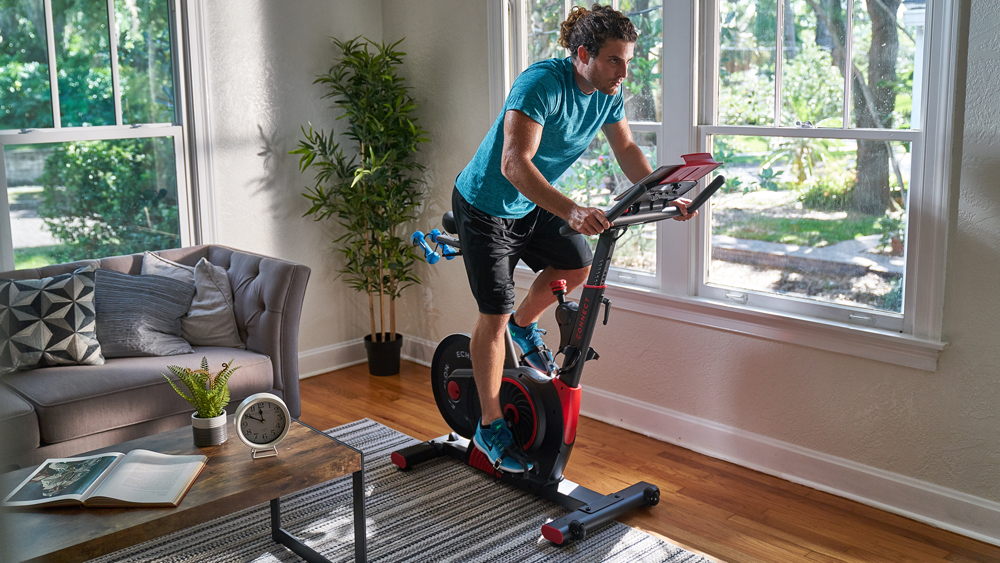Our Verdict
The Echelon EX3 offers a cheaper alternative to the popular Peloton bike thanks mainly to the lack of built-in screen – you’ll need to use a tablet or phone instead. The partner app is full of great workouts and the overall Echelon experience is impressive, if still quite expensive.
For
- Connects to partner app for workouts
- Cheaper than Peloton
- Enough resistance to challenge all users
Against
- No built-in screen
- Expensive monthly subscription
You can trust Coach
You can’t talk about Echelon without talking about Peloton. Peloton is a spinning bike with a built-in monitor to show you live and on-demand classes that replicate the atmosphere of studio sessions. It’s very expensive and even more successful –so expensive and successful that it’s no surprise that a raft of cheaper alternatives have appeared.
One of these alternatives is the Echelon EX-3 Smart Connect Bike, which is a home exercise bike that links up to an app full of live and on-demand spinning classes you can follow on a tablet or phone. That’s the key difference – there’s no built-in monitor on the EX-3, but it is a lot cheaper than the Peloton at £1,199 compared to £1,990, so you can buy yourself a very nice tablet with the difference and then you own a tablet as well as a bike!
On top of that, there is a £39.99 a month subscription to the Echelon app – the same price as Peloton’s app, which you need to use the bike. It’s a closed system, then, plus you’re on the hook for a fair chunk of change every month, so is Echelon worth that kind of money? As with Peloton there is a certain audience who will get a lot from the bike, but there are definitely cheaper alternatives to consider, including a membership to a gym that offers spinning classes.
The Set-Up
The EX-3 arrives in an impressively small box, which means there’s a fair bit of construction to do once you take all the components out of their slots in the polystyrene within. The set-up is not complicated, though, with clear instructions and no real heavy lifting involved. All the same, it took me around an hour to get everything in place.
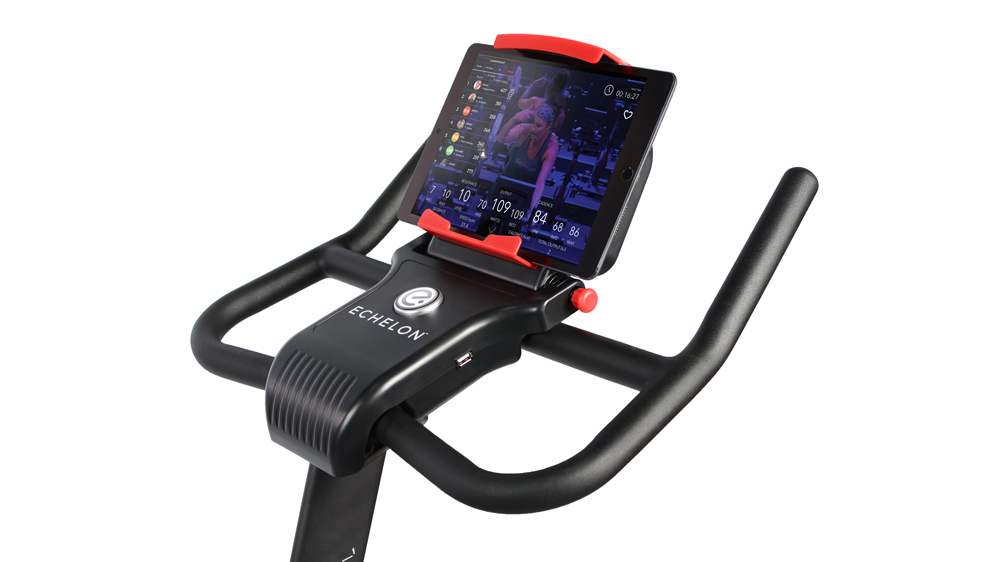
On the handlebars of the bike is a tablet holder that is easily adjusted to hold your device securely. Once you open up the Echelon app it takes seconds to link the bike to it.
The pedals have cages on one side to accommodate normal shoes and SPD clips on the other so you can clip in if you have the appropriate shoes.
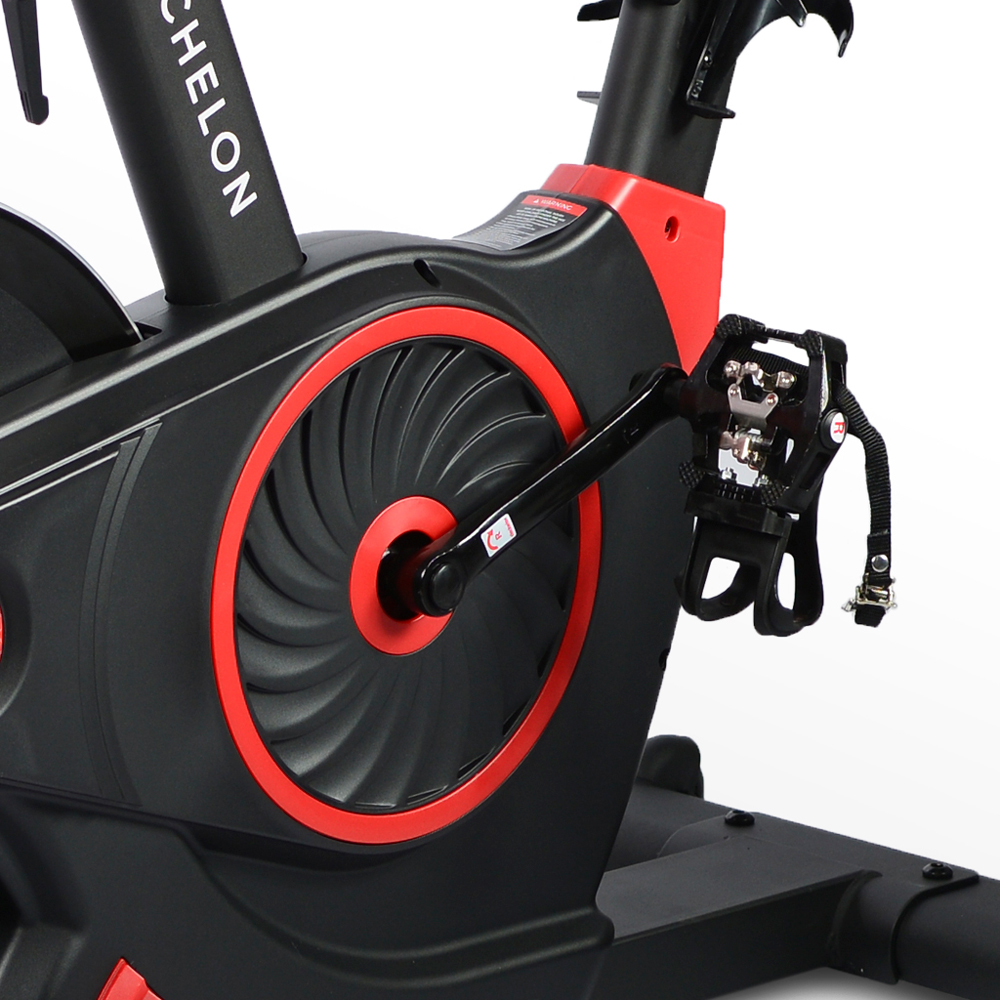
From there you can pick from the wide range of on-demand classes available, or check the live class schedule and book one for a more immersive experience – there’s a leaderboard and the instructor might even say your name. The classes can be filtered by distance covered, difficulty level and type, the primary ones being speed, strength, power and fusion, with the last being a mix of the first three. There are also non-spinning classes to be done off the bike, like HIIT, yoga and meditation sessions.
The app includes some scenic rides if you don’t fancy entering a virtual spinning studio. These allow you to cycle through Sydney Harbour, or along a beach, or up a mountain in Corsica. They’re nice enough, but not all that diverting. This bike is for spinning classes, after all.
Resistance is controlled via the knob on the frame, and there are 32 levels to scroll between. It takes a few turns to raise the level by a couple of points, and once I hit level 30 it felt like I was pushing through treacle to turn the pedals. Note that you need to be connected to the Echelon app for the resistance to work.
Once you start a class you see a range of stats on screen, including your resistance level, calories burned, power output and cadence. The instructor will explain what you should be aiming for throughout the classes, though unlike on Peloton these targets aren’t displayed as numbers on screen. You have to listen carefully to know how hard you should be pushing.
The Experience
From the off, the experience with Echelon's EX-3 is a little less impressive than on Peloton because even a large tablet isn’t quite as immersive as the huge screen on the Peloton, and the bike itself feels slightly less solid and stable, especially when you’re pushing hard at a high resistance. Also the empty studio where the classes are filmed gets slightly echoey between songs, which does take you out of the experience.
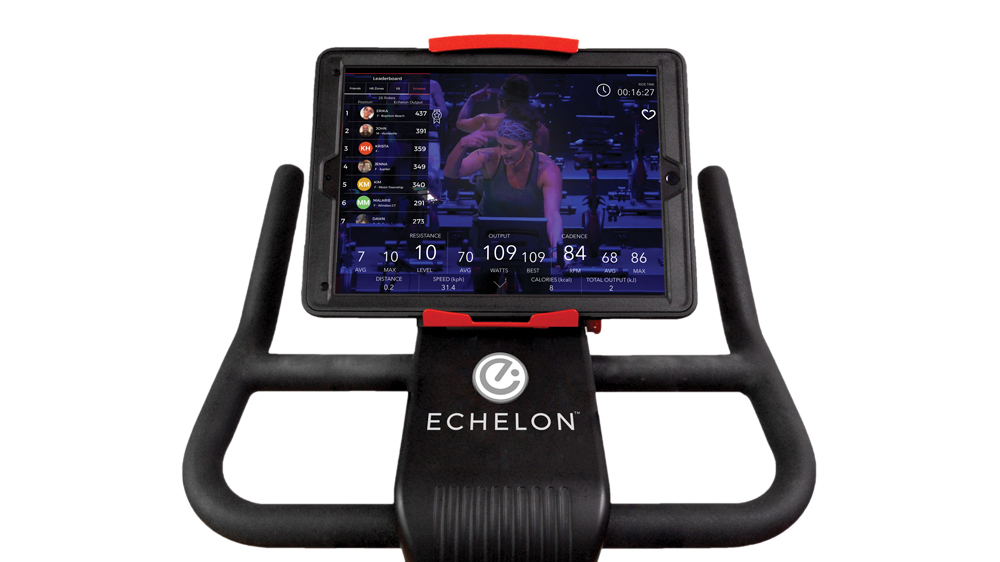
The classes do the job though, with a variety of incredibly upbeat instructors ready to push you to your limit using uptempo music and an endless supply of motivational maxims. I was told “every pedal is an opportunity” in my very first class on Echelon and that has stuck with me. Mostly because of how silly it is that every spinning class is granted such enormous levels of importance, but still, you will not be short of motivation, even if it does grate at times.
Sometimes the instructors could be clearer with their instructions, especially as the targets are not given on screen. There were also some terms thrown about that are clearly well known to spinning regulars but a little baffling for beginners, such as “isolate” (hover just above the saddle) and using numbers to describe where you should put your hands on the handlebars.
The leaderboard on the side of the screen shows your position against everyone who has ever taken the class, which is another source of motivation, though you can hide it if you don’t enjoy that type of competition. You can also see your heart rate on screen if you’re wearing a sensor – the Echelon picked up my Polar H9 chest strap as soon as I tapped the heart icon.
I tried a few classes, testing out the speed and fusion sessions as well as with one labelled one-hit wonders (sometimes the class names really don’t give much away as to what you’ll be doing in them). Speed classes involve more intervals at high cadences, while power and strength ones focus on higher resistance, while fusion combines all these.
Whatever you pick, all the classes do the job of burning calories and increasing your fitness, and there’s little doubt that if you used the Echelon bike a few times a week you’d be doing your fitness a world of good.
Verdict
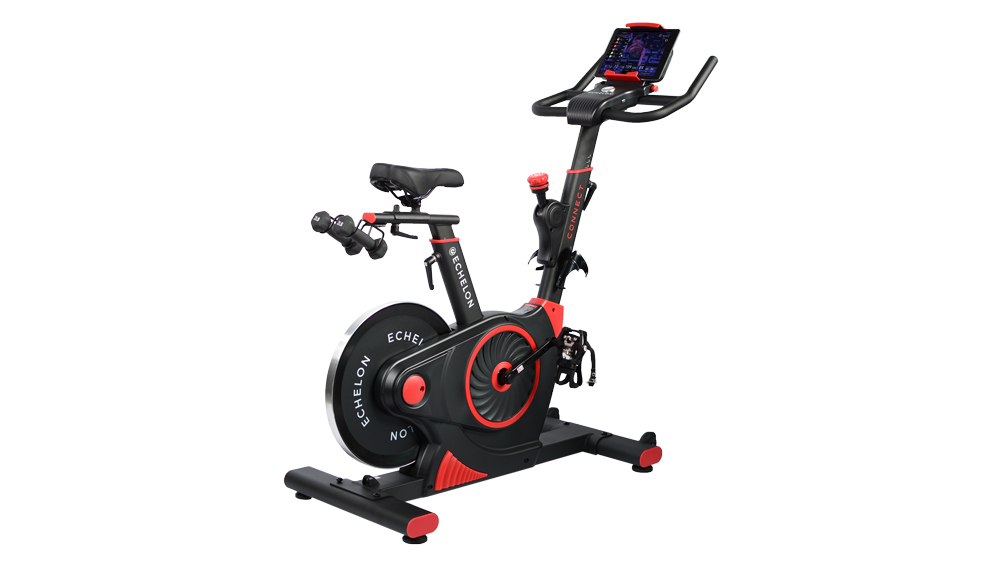
The Echelon EX-3 experience is not as good as you get with Peloton, but it’s not far off and the money you’re saving is substantial. Many people will already have a tablet they can use with it (iOS and Android apps are available), and if you don’t you can buy yourself one and still have money left over by not paying for Peloton.
However, the bike is only cheap compared with Peloton. It’s still comfortably over a grand for hardware that’s only useful if you then spend another £40 every month. You can get excellent spinning bikes for £500 to £700 and follow classes on YouTube, though you’ll have to live without the bike connecting to the screen and showing your stats.
As with Peloton, the closed Echelon system is also off-putting – it would be a huge bonus if you could link the Echelon bike to an app like Zwift, rather than restricting you to what’s available in the app.
But committed spinners will find a lot to like about the EX-3, not just the relative value compared with Peloton. It’s easy to use the bike once it’s set up, and you have a vast array of classes to tackle, plus an inexhaustible amount of motivational patter to keep you going.

Nick Harris-Fry is a journalist who has been covering health and fitness since 2015. Nick is an avid runner, covering 70-110km a week, which gives him ample opportunity to test a wide range of running shoes and running gear. He is also the chief tester for fitness trackers and running watches, treadmills and exercise bikes, and workout headphones.
